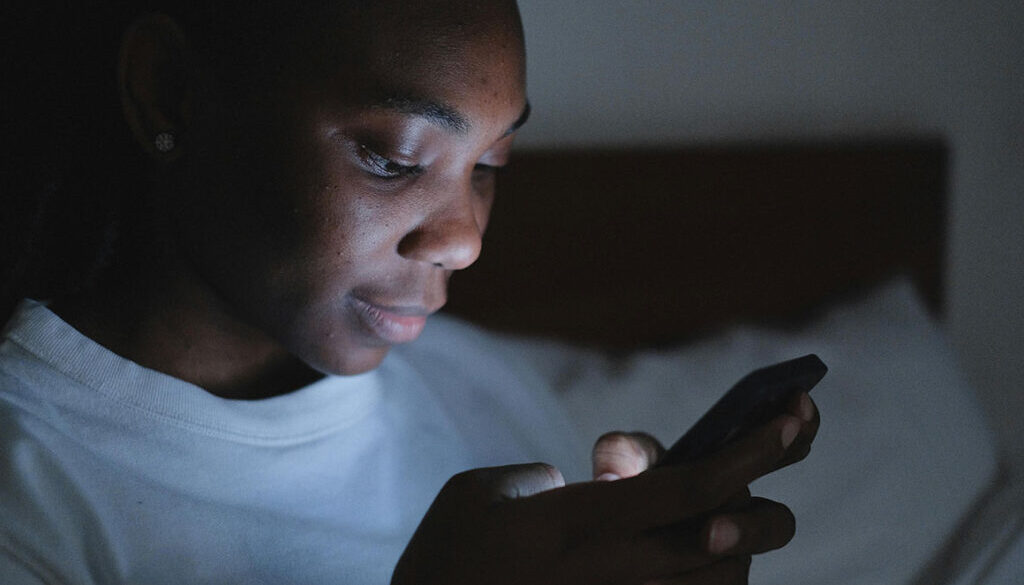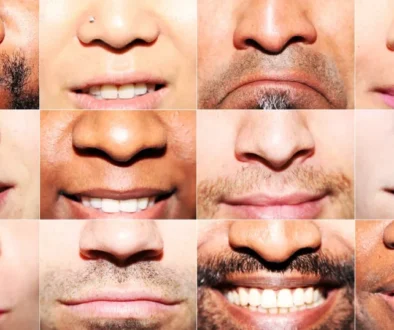Blue Light Pollution and its Negative Effects on Sleep
Under the leadership of their advisor Zach Potter, a STEM/Technology Education teacher at Exeter Township Senior High School, a group of senior engineering students are working on a project, both for a class and a competition, based on light pollution and its negative effects on the sleep patterns and overall health of people. Part of the competition is identifying and working with a partner, like a local non-profit, to help drive and steer the project. Their goal for both the class and competition is to use the engineering design process to design a solution to help people who are affected by sleep disorders and other health issues caused by light pollution and overexposure to blue light.
Everyone has heard the warnings against blue light – but what do they really mean? We experience blue light often throughout our daily lives. Offices and schools use blue light in their lighting because it stimulates brain functions and allows for more productivity. The problem comes later, as we begin to get ready for bed, and are still being exposed to blue light from the plethora of devices in our home that emit blue light including televisions, cell phones, and even bedside lamps (Kolbe et al).
Over exposure to blue light, or being exposed to blue light too late in the evening can cause irregularities in your circadian sleep cycle. Your body naturally begins to make hormones that make you sleepy around a certain time at night. When you expose your brain to blue light, you tamper with the regulation of your sleep hormones, and risk a good night’s sleep (Suni et al).Sleep deprivation can cause hormone irregularities and inflammation. (Cougnard-Gregoire et al). Studies have found that your body can begin to show detrimental side effects after just two nights of irregular sleep.
Our school, Exeter Township Senior High, is one of the many competitors in the PA Governor’s STEM competition. The PA Governor’s STEM Competition is an annual STEM challenge with teams across the state working to create a solution for a problem prevalent in Pennsylvania. The theme of this year’s competition is Creating a Commonwealth with Universal Design in Mind. Our team, consisting of Hansika Kunduru, Sophia Jones, Alex Nerney, Connor Stoltzfus, and Richter Bogus, has decided to tackle the problem of irregular circadian rhythms due to prolonged blue light exposure. This problem particularly affects teenagers, as they are more often exposed to blue light through the school day, and during leisure time on their phones, but it is not specific to just them – all ages can suffer the consequences of over exposure to blue light. Blue light recording technology is employed by professional sports teams and those who are wealthy enough to afford experts, but we would like to make the technology more user friendly for everyone, no matter their status in life.
We are working to create a device that monitors the amount of blue light people are exposed to daily, and then offer real time alerts when it may be time to put the phone down and take a break from the blue light. We want to create a downloadable app which will send push notifications to the user to inform them of possible risks to their circadian rhythm.
Besides monitoring blue light exposure, we would also like to be able to sense temperature, and other factors that can influence the body’s ability to fully rest.
We are excited to provide updates as we continue through the process of this project!
UPDATE: 5/6/24
The Exeter Township PA Governor’s STEM team has qualified for the final, state level competition! They will be traveling to Harrisburg on May 8th to present their project and compete against many other schools.
Since the preliminary competition, the team has been working hard to develop an application capable of interpreting incoming data from a light sensor and reporting the information in an easy to understand fashion.
Using small case studies, in which a student wears a light sensor throughout a portion of their day, the team has been able to record and rationalize the data coming off of the sensor. This data, in conjunction with their computer program, allows the students to analyze the amount of blue light exposure the subject had.
The team also created a program for an application run through a microcontroller called a Raspberry Pi. Using a touch screen interface, users can interact with the program as if they were using an app on their phone. This program allows the user to input their own data from the day, as well as access the data from their light sensor.
By combining both the user provided data and the data collected by the sensor, the program can then display a total “sleep score” allowing the user an easy way to see how their sleep might have been affected throughout the day.


References:
Cougnard-Gregoire, Audrey, et al. “Blue Light Exposure: Ocular Hazards and Prevention-A Narrative Review.” Ophthalmology and Therapy, U.S. National Library of Medicine, 18 Feb. 2023, www.ncbi.nlm.nih.gov/pmc/articles/PMC9938358/#d32e599 title.
Kolbe, Isa, and Henrik Oster. “Focus: Clocks and Cycles: Chronodisruption, Metabolic Homeostasis, and the Regulation of Inflammation in Adipose Tissues.” NCBI, NCBI, 27 June 2019, https://www.ncbi.nlm.nih.gov/pmc/articles/PMC6585521/. Accessed 17 September 2023. Suni, Eric, and Nilong Vyas. “How Lack of Sleep Impacts Cognitive Performance and Focus.” Sleep Foundation, 18 July 2023, www.sleepfoundation.org/sleep-deprivation/lack-of-sleep-and-cognitive-impairment#:~:text=Poor%20Attention%20Span%3A%20Poor%20sleep,Poor%20sleep%20also%20diminishes%20placekeeping



